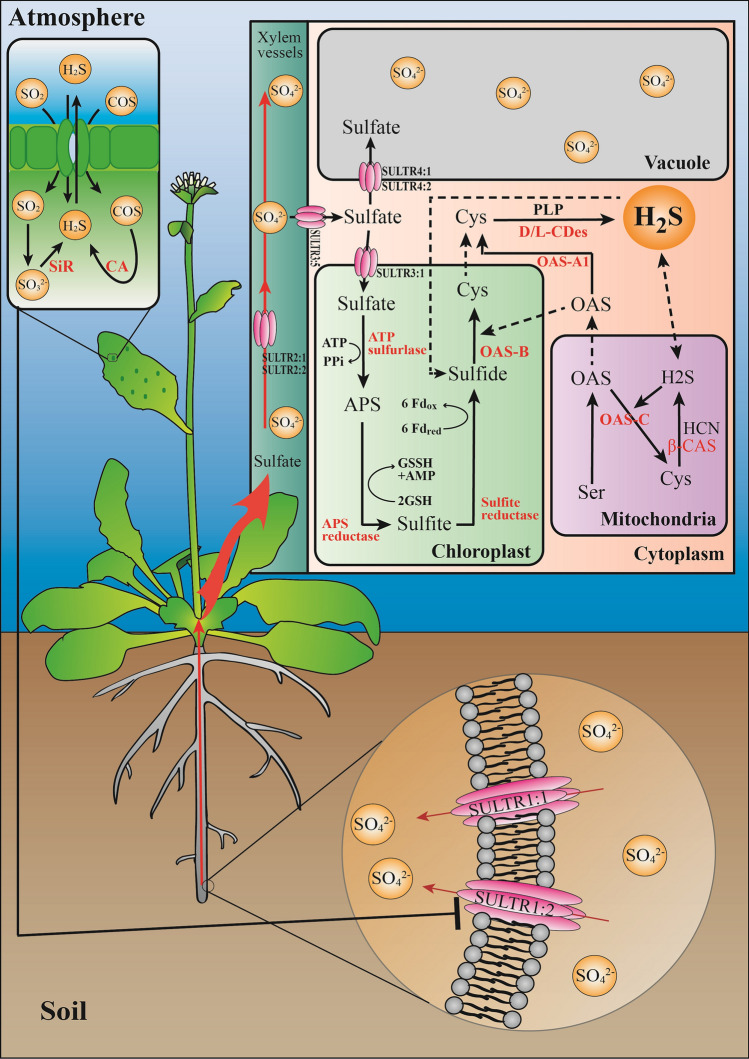Fig. 1.
H2S acts as a node in plant sulfur metabolism. The transport of sulfate from roots is the main way for plants to absorb S elements, which are then transported to all parts of the plant through the xylem vessels. Part of the sulfate entering the cells will be stored in vacuoles, and the other part will enter the assimilation pathway in the chloroplast. After being activated to APS, sulfate is further reduced to sulfite via APS reductase with GSH as the reducing molecule. Then, through a six-electron reaction with reduced ferredoxin, sulfite is reduced to sulfide under the catalysis by SiR. The produced sulfide is a substrate for the synthesis of cysteine. Together with OAS, cysteine is synthesized under the catalysis of OAS-TL enzyme. Cysteine can be degraded to generate H2S by CDes. Another mode for obtaining S elements is from the atmosphere. H2S, COS and SO2 are captured by plants through the stomata. COS can be hydrolyzed to produce H2S under the action of CA, while SO2 can be hydrolyzed into sulfite and enter the assimilation pathway. The two absorption pathways interact and restrain each other

